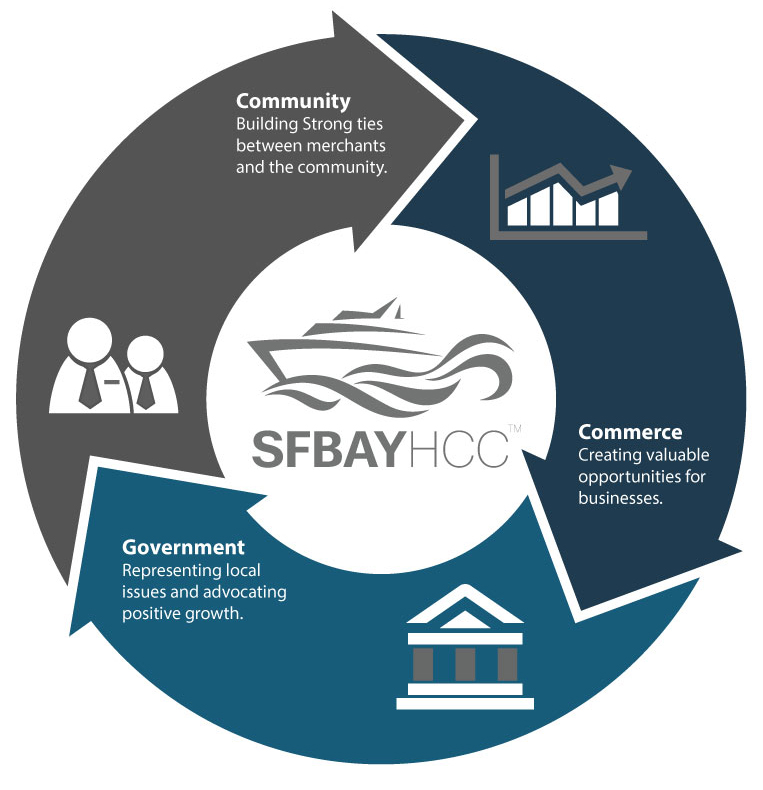The Chamber as a Platform for Social Impact
The evolution of the business chamber of commerce organizational model has rapidly accelerated by innovations in the political advocacy sphere where lobbying interests have now effectively supplanted legacy business organizations, such as chambers of commerce, as the new front-line stakeholders for special interests. Political lobbying groups have essentially displaced entirely many chamber of commerce organizations as the advocacy instrument of choice, relegating the legacy chambers to honorary roles within the business community the way a municipality might keep the ‘old town’ plaza preserved from gentrification.
Fast forward from the heyday of chambers of commerce to today, one can find many permutations of the original chamber of commerce organizations now formed to fulfill a broad spectrum of objectives ranging from being simple affinity groups, business support or social circles, local political advocates for companies needed to navigate the civic realm, or seeking the advancement of social causes. The Hispanic Chamber of Commerce model is a subset of these legacy organizations, branching out further still into a complex subcategory of ethnocentric organizations.
In the case of U.S.-based Hispanic Chambers of Commerce organizations, these ethnocentric organizations are for the most part organized at the national, state, and regional level. Regional chambers can be city focused or county-wide, and in many cases have affiliations with neighboring city or county chambers as well as those organized “above” them at the state or national level. Chambers of commerce are typically independent entities with no exclusive organizational or geographic jurisdiction over other organizations, and in some cases overlap each other in the same way business enterprises overlap each other in a free market environment. The only exception to this rule is generally the local city chambers of commerce, where usually the municipalities play a role in preserving the regional exclusivity of the original founding organization. While city chambers are not government organizations there are many instances where they may appear quasi-governmental as in cases when economic relief funds disbursement or business community engagement are concerned.
Traditionally, the Hispanic Chamber of Commerce model has served the purpose of providing advocacy for Hispanic and minority-owned small businesses, though the charter of these organizations have naturally expanded into community causes and partnerships with civic leadership in driving local socioeconomic impact. The key element that has provided ethnocentric organizations, or any organization for that matter, has been the unity among its constituent supporters or members. The stronger the member or audience base, the stronger the leverage these organizations have been able to bring to matters of sociopolitical import.
At the leading edge of this evolutionary process for chambers of commerce at all levels has been that of the Chamber of Commerce as a Platform, where the goal of the organization has shifted from solely focusing on grassroots sociopolitical initiatives to functioning more like a modern media company that leverages omni-channel communications across traditional print, television, radio communications channels, as well as inbound and outbound Internet communications channels.
The San Francisco Bay Area Hispanic Chamber of Commerce is leading the innovation edge, pushing the boundaries of the traditional ethnocentric organization with the goal of elevating the “Hispanic narrative” to a level of operational efficiency in reaching constituents as well as supporting the causes of its member organizations. Even traditional cause-selling has been transformed with a trifecta communications approach emphasizing synergy between community, commerce, and government.
Civitas, Commercium, et Imperium.
The core philosophy of the San Francisco Bay Area Hispanic Chamber of Commerce stands on the principle that community, commerce, and government thrive in direct proportion to the synergy between the parts; none stands independently, all stand stronger together. The triad approach to addressing the needs affecting the socioeconomic prosperity of the Bay Area region has allowed this organization to transcend the traditional ethnocentric organizational model approach to a more holistic, all-inclusive approach to advocating for the needs of the community at large.
Elevating the needs of the community to the same level of our corporate or civic leadership partners has added a deeper perspective to the way we provide political advocacy support, the community causes we pursue, and the approach we take with establishing corporate partnerships. Putting the socioeconomic prosperity of the entire region above the needs of individual large corporate members has further driven the pace of innovation for this chamber, leading to a fresh new take on what once used to be an organization model designed to give large corporate interests a market advantage, oftentimes at the expense of other stakeholders in the region.
Please visit our Website at https://sfbayhcc.com to learn more about the broad range of communications outreach programs we offer to help you reach the 7 million audience of the San Francisco Bay Area.
